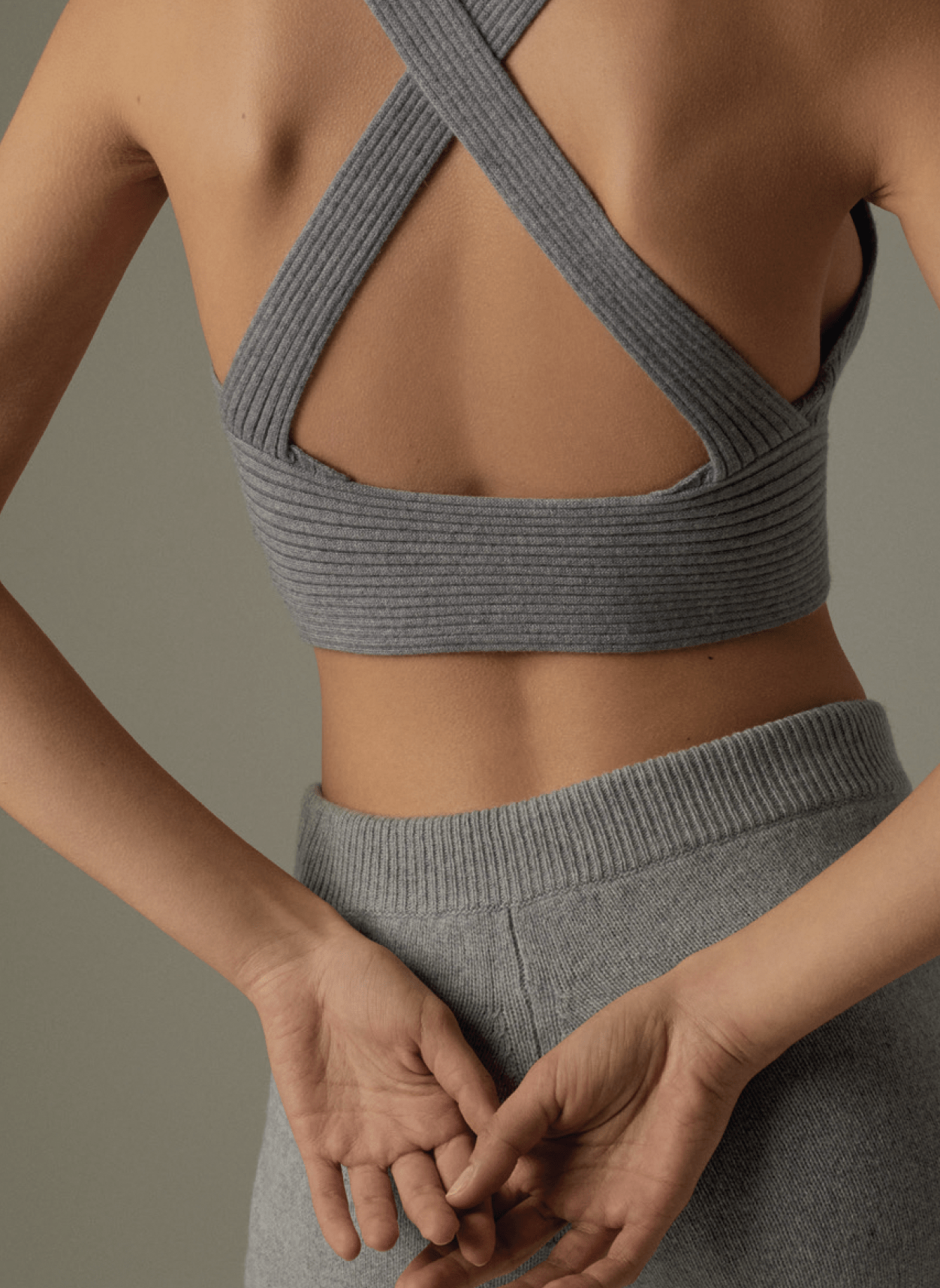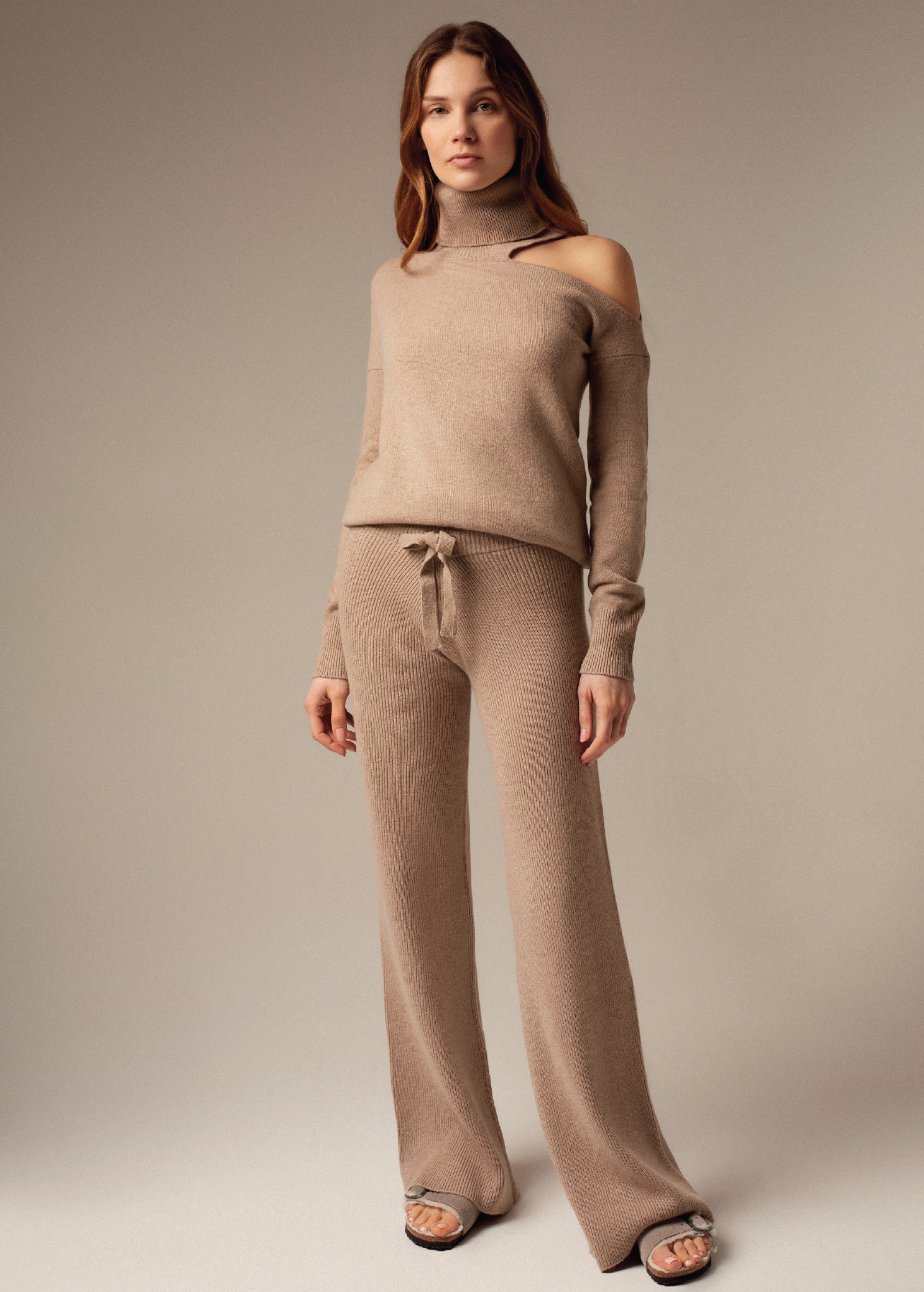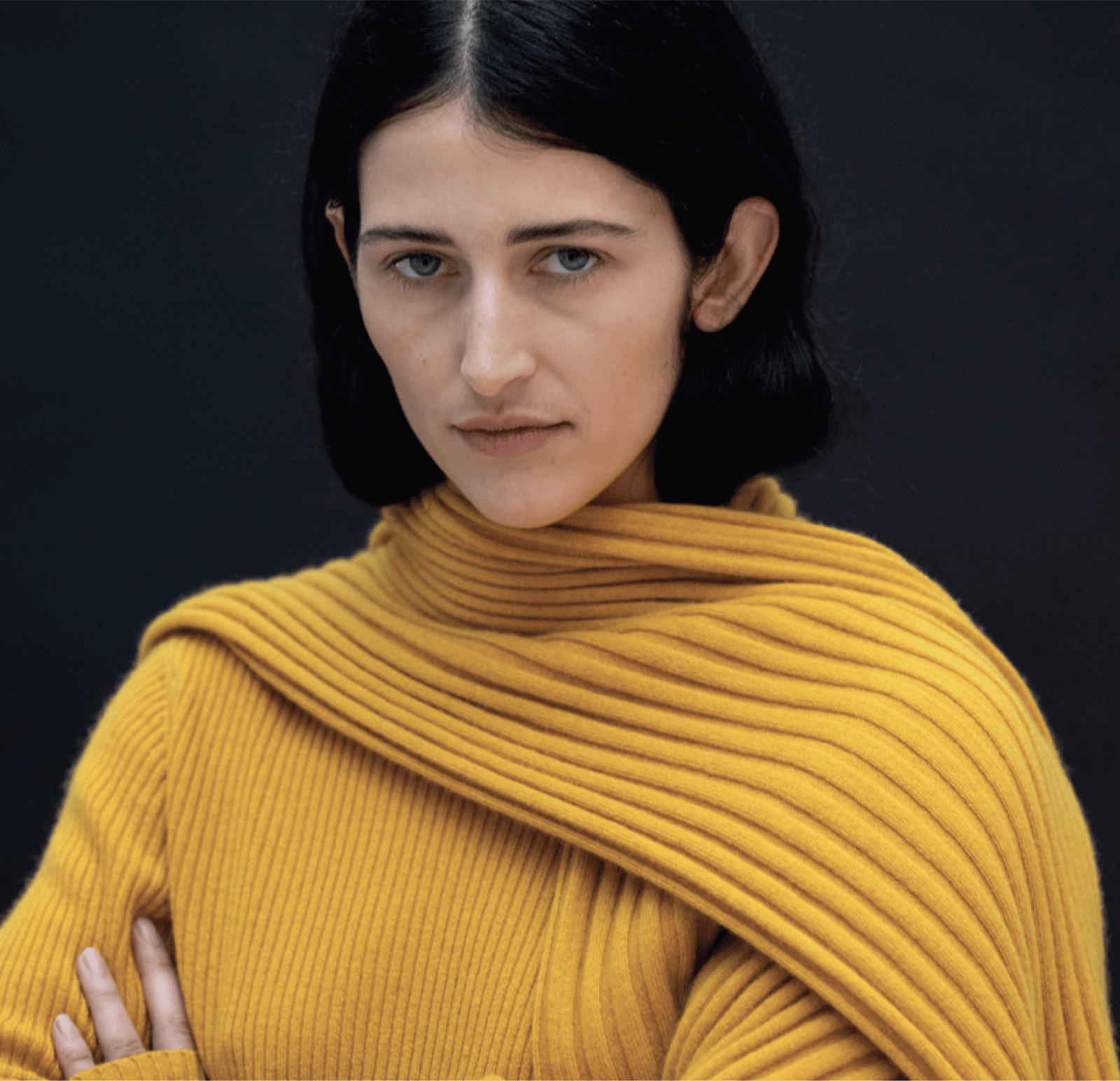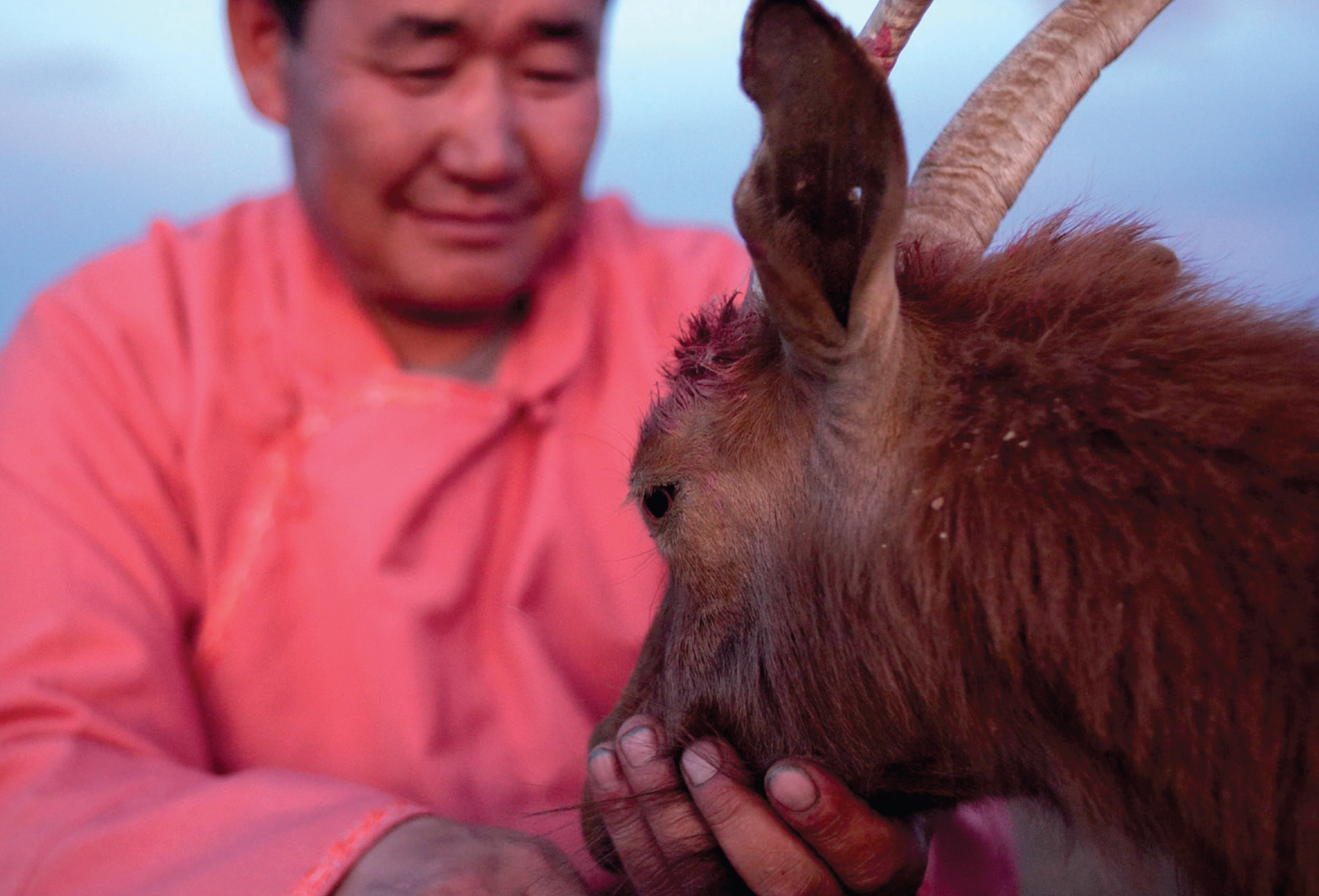
PRECIOUS THREADS
Versatile, cosy, and effortlessly elegant, Tania Braukamper discovers how the best cashmere has sustainability at heart
Being hugged by a cashmere sweater is one of winter’s greatest pleasures. But make no mistake: the versatility of this material goes well beyond the classic pullover.Whoever has lounged around the house on a lazy Sunday in a pair of cashmere joggers knows the true meaning of comfort. And from business meetings to dinner dates, there’s a cashmere piece that makes braving the chill that much more inviting. “Cashmere is the best,” says designer Oyuna Tserendori. “It can cool you in summer, it can keep you warm in winter. It’s natural. It biodegrades. It ages very well if one takes care of it. It’s the softest, the lightest, the warmest, and the combination of these three things makes it very special.”
A Mongolian native, Tserendorj is the founder of luxury cashmere brand Oyuna, which offers a wide range of cashmere pieces: cropped trousers, knit dresses, softly belted jackets you could throw over anything. All of Oyuna’s pieces are elegant, luxurious, and sumptuously soft. On top of that, Oyuna’s cashmere is responsibly sourced from Mongolia – a crucial point given that demand for more and cheaper cashmere has led to overgrazing, jeopardising the country’s grasslands. “I would love for future generations to experience Mongolia the way one can experience it today, which is really special,” says Tserendorj. “In order to do that we need to take care of the culture, the land, the people.”


Made in Mongolia
Mongolia is one of the least densely populated countries on the planet. If you were to fly over it as a bird on the wing, you’d see rolling grasslands dotted with round, white, tented dwellings called gers, and vast herds of grazing animals. Nomadic herders ride through the plains on horseback, custodians of the land for thousands of years and counting. “The cashmere industry supports the livelihood of herders around the globe, the majority of which live in Mongolia and the Inner Mongolia region of China,” explains Una Jones, CEO of the Sustainable Fibre Alliance (SFA). “The fibre is produced by nomadic families or small, family-run farms, where it is often the main source of income. Whenever there is a fluctuation in price or a period of instability in the market, those at the beginning of the supply chain, the herders, are impacted the most.”
One of the SFA’s initiatives is to provide a certification to brands that use responsible practices. That means minimising environmental impact, safeguarding herder livelihoods, and meeting high animal welfare standards. ‘This certification makes it easy to know you’re buying from the right places. Says Jones,”More and more brands are sourcing cashmere that has been certified through standards such as the SFA Cashmere Standard, and consumers are increasingly able to find certified products.”

Consciously chic
Launched in 2020, MyCashmere is another label that combines responsible practices with beautiful aesthetics. The brand uses two types of cashmere: SFA-certified 100% cashmere yarn and Re. Verso”” recycled cashmere. Founder Felice Langkamp says the latter can be made from leftover factory scraps or from customers’ old and unwanted cashmere pieces. “We love this yarn,” she says. “It’s so versatile, and one of the unique properties is that it gets softer with each wash.”
MyCashmere’s debut range was built on classic variations of natural colours which can, in Langkamps words, “transcend any seasons or trends” and act as true wardrobe staples. “That being said,” she adds, “within each colour, we have meticulously researched for the most unique and special variations of each tone.”
Like the colour palette, MyCashmere’s cuts are timeless yet well thought out – and often come with a surprise twist. You might pick up a roll-neck sweater with a cut-out revealing a sensual hint of shoulder, or a cashmere bralette with cross-over back straps – a piece that once again proves the unexpected versatility of the fibre. “Because it’s cashmere, it’s the perfect warm under layer to an outfit in the winter, while during the summer, it’s the perfect breathable crop top that can be worn with a palazzo trouser or shorts” Versatile, cosy, and effortlessly elegant: is there anything cashmere can’t do?

Cashmere care
Whichever cashmere pieces you choose to invest in, the key is to think of your purchases as just that: an investment. “Cashmere’s durability means it can last you a lifetime and be passed down through generations, making the investment into this fabric so worth it” says Langkamp, who believes that responsible luxury “must and will be the new luxury.”
Indeed, one of her biggest passions is teaching people how to prolong the life of their cashmere pieces, and each of My Cashmere’s garments comes with a QR code on the label which takes you to a care guide. There, you can find step-by-step instructions on how to wash, dry and maintain your cashmere. “Contrary to popular belief, cashmere is not at all difficult to be taken care of with the right products and the right process” she says.

For Oyuna Tserendorj, it’s all about the relationship we create with our garments, and being willing to put in the time and effort to treat them well in order to get more value out of them. “Cashmere is so precious,” she says. “It takes a whole year just to get 200 or 300 grams of cashmere, enough for one pullover.”That’s the equivalent of hair from about four goats. To put that in perspective, one sheep can produce enough fibre to make four wool jumpers. “That’s why we never throw anything out,” says Tserendorj. “Every millimetre of cashmere has so much work put into it.”

Shaping the future
There’s never a bad time to shop for cashmere. In every season, it has its place. Through shifting trends, it remains steadfast. It’s the ultimate in comfort, the last word in luxury. Plus, it’s more than a smart investment in your wardrobe, it’s an investment in the future of Mongolia – and the planet. “While some of Mongolias rangelands have already become permanently degraded, the majority are still able to recover with effective intervention” says Una Jones.
“This means supporting herders to be stewards of the rangeland and incentivising the adoption of sustainable grazing practices and collective action to achieve long-lasting change.” Asan added benefit, Mongolia’s rangelands – which make up nearly 80% of its land mass – are one of the world’s biggest carbon sinks.

“When managed well, they have huge potential to sequester carbon.” ‘That’s why, says Jones, we have a collective responsibility to protect the land and the people and animals it supports. “Doing so not only benefits the fashion industry and herders,” she says, “It helps to protect the entire planet.” When it comes down to it, says Oyuna Tserendori, protecting the planet shouldn’t even be a question. “Now we call it sustainability, but it really should be the reason to be in this life – to respect people and our surroundings. We just have to listen to our hearts, our common sense.” And if doing our bit for the planet means wrapping ourselves up in luxuriously soft and stylish cashmere, who are we to argue?
